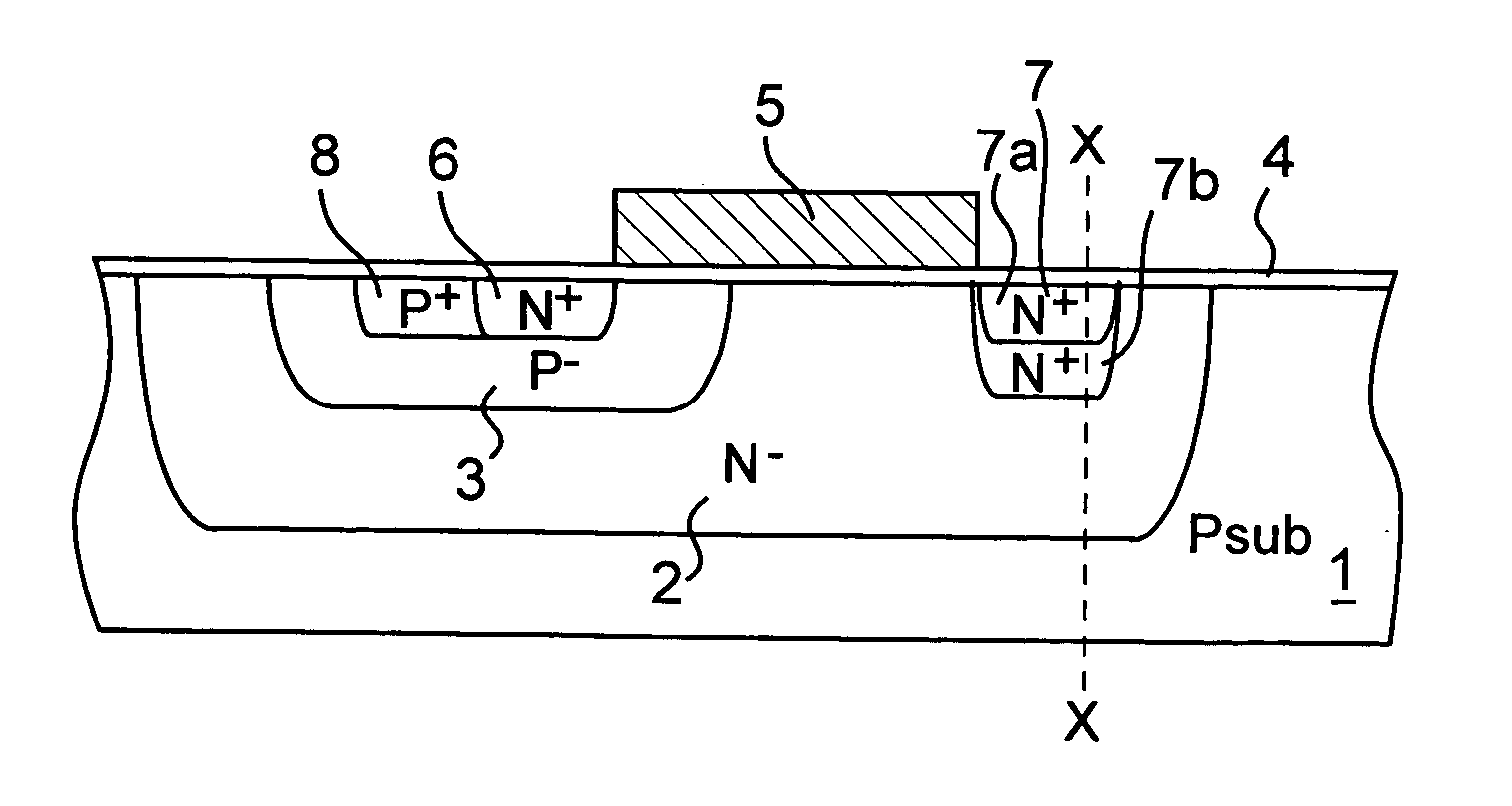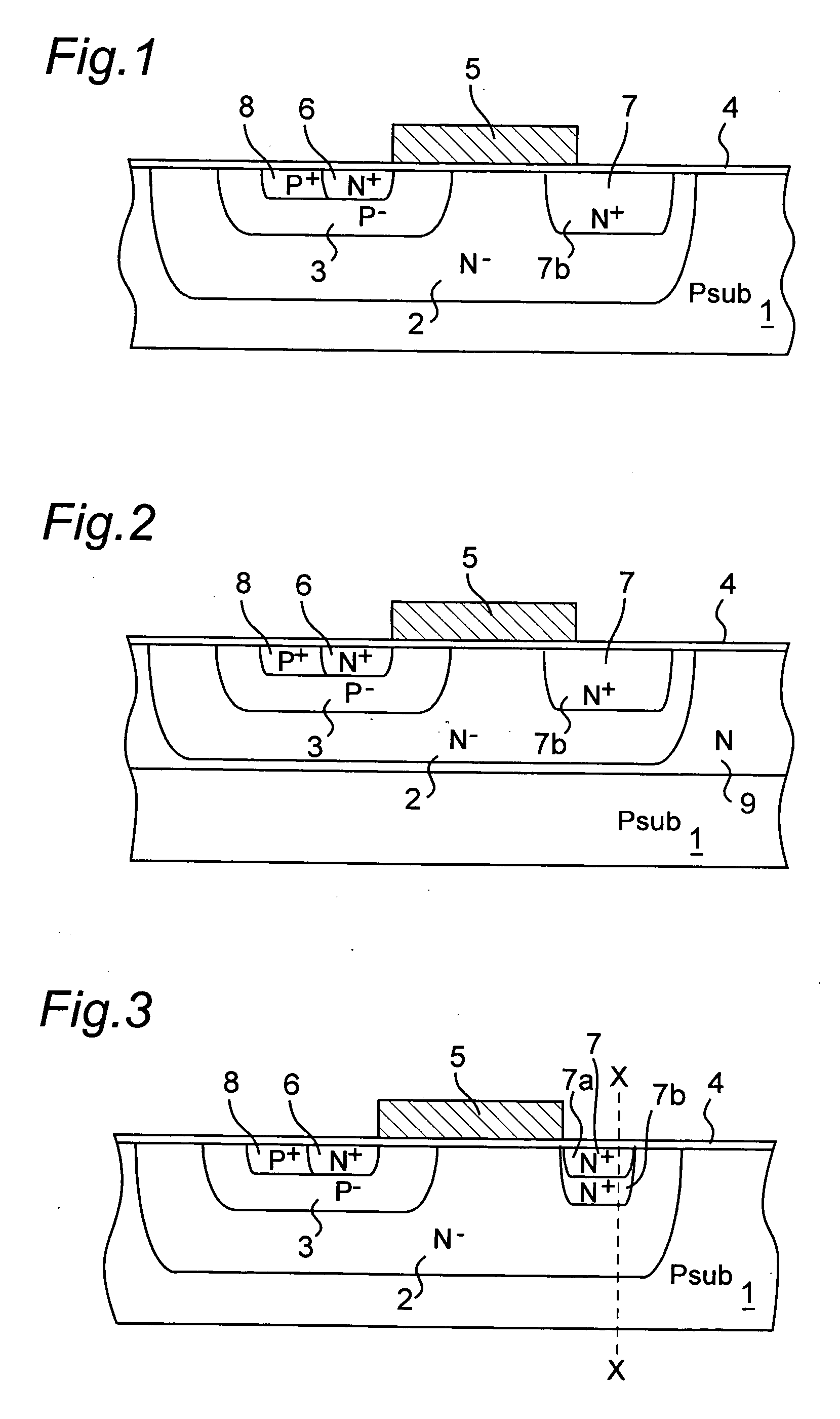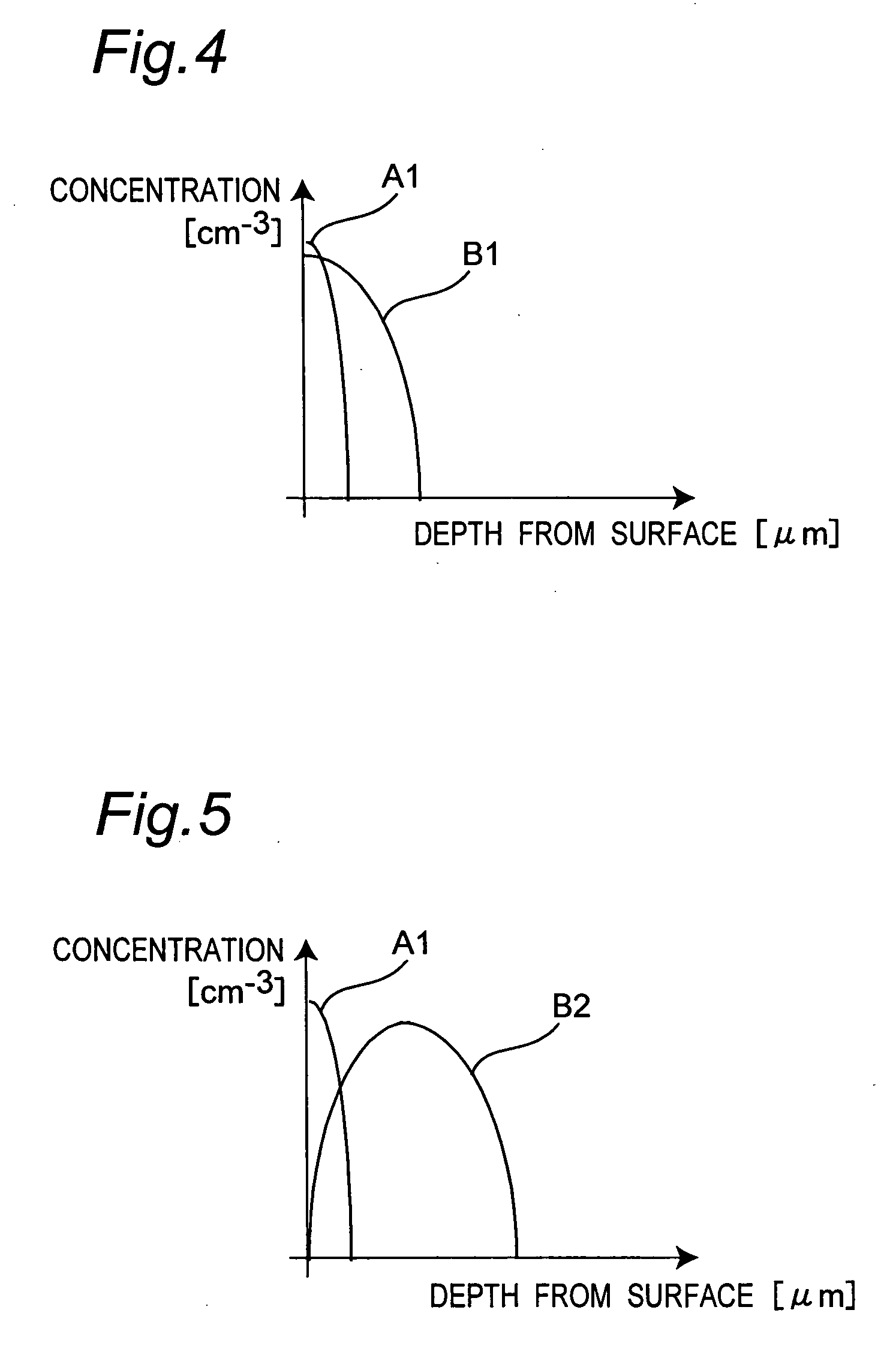Lateral double-diffused MOS transistor and manufacturing method therefor
a technology of mos transistor and mos, which is applied in the direction of instruments, code conversion, transmission systems, etc., can solve the problem of inability to choose the elongation of the drift region, and achieve the effect of low on-state resistance characteristics and high breakdown voltag
- Summary
- Abstract
- Description
- Claims
- Application Information
AI Technical Summary
Benefits of technology
Problems solved by technology
Method used
Image
Examples
first embodiment
[0055]FIG. 1 shows a cross-sectional structure of a lateral double-diffused MOS transistor which is a first embodiment of the present invention. This lateral double-diffused MOS transistor is an N-channel type MOS transistor in this example and includes a lightly doped N-well diffusion region 2 serving as a drift region formed on a P-type substrate 1. A P-type body diffusion region 3 for forming a channel is formed on a surface within the lightly doped N-well diffusion region 102. A gate electrode 5 is provided in such a position as it covers from part of the P-body diffusion region 3 to part of the N-well diffusion region 2 located outside the diffusion region via gate oxide 4 serving as an insulating film. An N+ source diffusion region 6 and an N+ drain diffusion region 7 are formed on top of the P-body diffusion region 3 and top of the N-well diffusion region 2, respectively, both of which correspond to both sides of the gate electrode 5. A region of the P-body diffusion region 3...
second embodiment
[0070]FIG. 2 shows a cross-sectional structure of a lateral double-diffused MOS transistor which is a second embodiment of the present invention. It is noted that component elements similar to those of FIG. 1 are designated by the same reference numerals. As in FIG. 1, interconnections, field film and overcoat film are omitted in illustration.
[0071] This lateral double-diffused MOS transistor differs from that of the first embodiment in that the MOS transistor is formed not in the P-type silicon substrate 1 but in an N-type epitaxial layer 9 formed on the P-type silicon substrate 1.
[0072] In some cases, MOS transistors are used in combination with bipolar transistors for improvement of their analog characteristic. In such a case, an N-type epitaxial layer 9 having a specified concentration may be formed on the P-type silicon substrate 1. In the example of FIG. 2, on top of such an N-type epitaxial layer 9 is formed an N-type drift region 2 having a concentration different from tha...
third embodiment
[0075]FIG. 3 shows a cross-sectional structure of a lateral double-diffused MOS transistor which is a third embodiment of the present invention. It is noted that component elements similar to those of FIG. 1 are designated by the same reference numerals. As in FIG. 1, interconnections, field film and overcoat film are omitted in illustration.
[0076] This lateral double-diffused MOS transistor differs from the first and second embodiments in that the drain diffusion region 7 is composed of two portions, a shallow diffusion portion 7a and a deep diffusion portion 7b, having different concentration distributions. The shallow diffusion portion 7a, which is formed shallow by using arsenic, is formed simultaneously with the source diffusion region 6 and in self alignment with the gate electrode 5. The deep diffusion portion 7b, which is formed deep by using phosphorus, has a 1 / 1000 or more concentration of the peak concentration of the source diffusion region 6 and is positioned deeper th...
PUM
 Login to View More
Login to View More Abstract
Description
Claims
Application Information
 Login to View More
Login to View More - R&D
- Intellectual Property
- Life Sciences
- Materials
- Tech Scout
- Unparalleled Data Quality
- Higher Quality Content
- 60% Fewer Hallucinations
Browse by: Latest US Patents, China's latest patents, Technical Efficacy Thesaurus, Application Domain, Technology Topic, Popular Technical Reports.
© 2025 PatSnap. All rights reserved.Legal|Privacy policy|Modern Slavery Act Transparency Statement|Sitemap|About US| Contact US: help@patsnap.com



